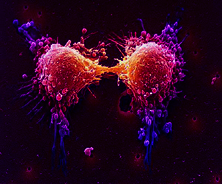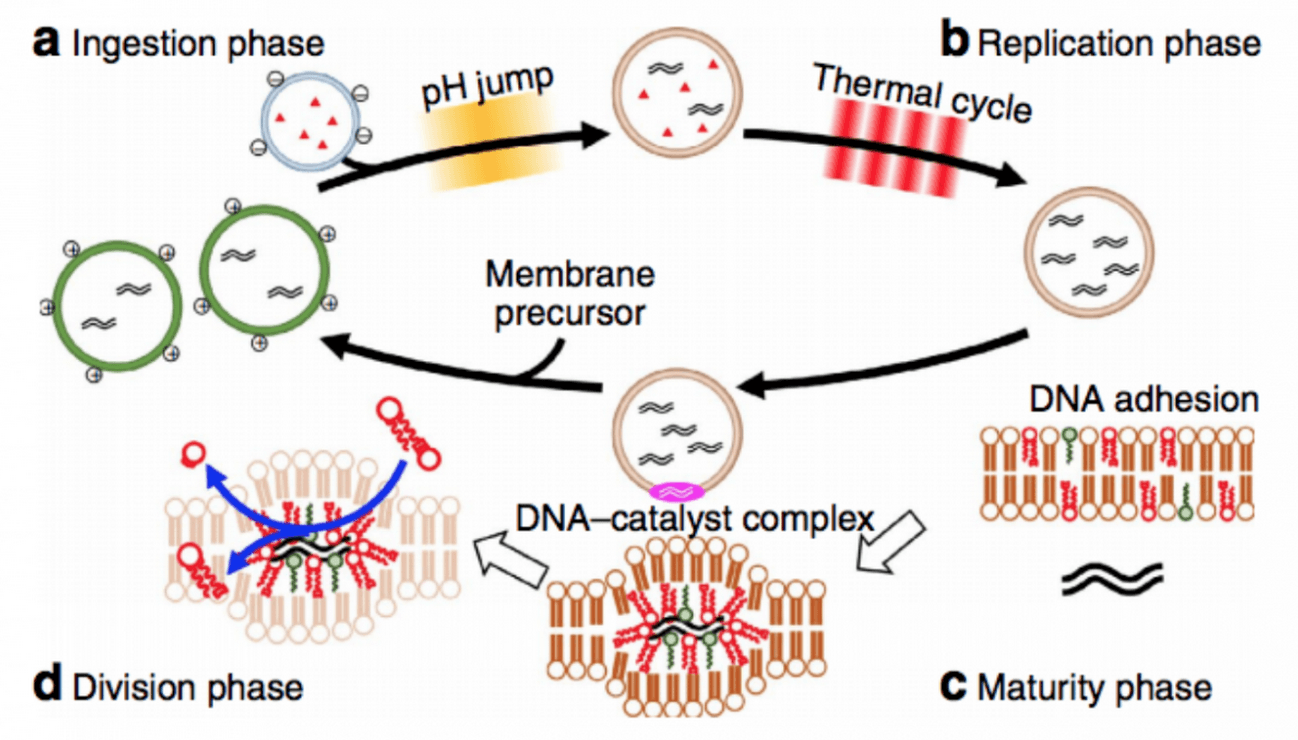God Mode Enabled: Early Artificial Cells Able to Replicate

Japanese scientists are reporting success in creating cells that are capable of replicating and maybe evolving equivalent to early cells.
In a paper published in Nature today, scientists from the University of Tokyo lead by Kensuke Kurihara are reporting self replicating lipid structures or synthetic “protocells” that resemble early precursors of life. Study of early carbonaceous materials lead to this study in the hopes of replicating early earth like conditions and collaborative dynamics of non living materials to create replicating cells. In the end the researchers were clearly able to distinguish ingestion, replication maturity and division.
Living Protocells
Protocells are usually referred to cell like components that are not really alive, but share many features with living cells. For a protocell to have ability to replicate, the cells must not just be able to replicate, the replicated daughter cells should hold the ability to restore the parental cell’s structure. The protocells were made of lipid bilayers into giant vesicles that resemble real cell, with DNA and proteins inside them that held instructions to replicate cells.
Not Entirely Living Yet
Changing pH around the protocell’s environment triggered division of cells, while periodic temperature changes aided replication. Challenging part of the experiment was replenishing the protocell’s supplies once they divide. This was done by designing the synthetic cells in such a way that they absorb nearby cell like structures rich in substrate filled GV. Not entirely self sufficient living cells, but give them a break, nature had millions of years to do the same thing while these researchers had maybe one government grant and multiple deadlines.
The authors have explored visceral fusion extensive in detail in their paper. The replication was confirmed to only occur in cells that have ingested dNTPs via vesicular fusion, with lower frequency division in cells with non-amplified DNA.
The paper also confirms or enforces the non-complicated cell division in modern bacteria, activated by a lipid synthesising protein that produces excess lipids. This leads to cell elongation and eventually division. In their tests the synthetic protocells produced three identical generations.
Re-creating Early Life
The researchers are looking to create advance versions of protocols to answer other questions about how early cells developed their physical characteristics and the speed with which they replicated. For additional reading, check out the paper linked below, it’s a pretty articulated paper and open access.
Source: A recursive vesicle-based model protocell with a primitive model cell cycle, Kensuke Kurihara, Yusaku Okura, Muneyuki Matsuo, Taro Toyota, Kentaro Suzuki & Tadashi Sugawara | doi:10.1038/ncomms9352



